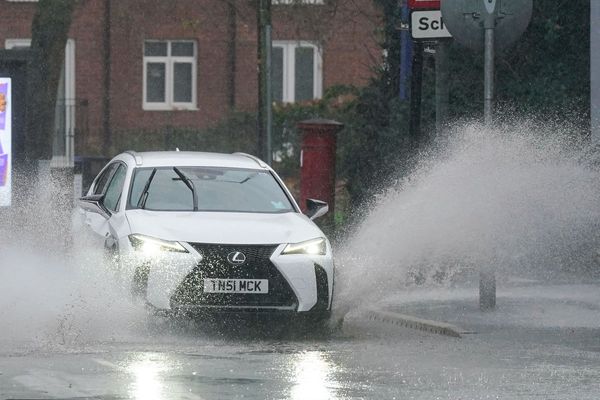A Nottingham expert has warned more Asian hornets could start appearing in the UK over the coming years as temperatures warm. Dr Christopher Terrell-Nield, principal lecturer in Ecology at Nottingham Trent University, has shared his predictions for the coming summer months, and outlined what insects he thinks people in Nottinghamshire can expect to see from May until autumn.
After a particularly wet March, warmer temperatures have been enjoyed throughout May, with more beautiful weather expected headed into June, but high rainfall over the last few months could impact the wildlife we see this summer. With a fairly mild winter behind us, and temperatures generally rising, the number of Asian hornets in the UK could increase over the next two years.
Dr Terrel-Nield said: "I would expect to see more coming over the two years, but if it gets very warm, we'll get other things as well. We're always collecting animals from other parts of the world, either naturally as they migrate or find conditions that are suitable."
Does more need to be done to clamp down on doug fouling? Let us know.
While European hornets are native to the UK, Asian hornets are a recent arrival. It can be distinguished from its native counterpart with its regular stripes of black and yellow on its abdomen, while the European one has stripes that have “teardrops on them”.
Asian hornets are known to be highly defensive of their nests and can swoop down and sting in ‘mass attacks’ when they feel threatened. While the Asian hornet does not pose an active threat to humans, it can be detrimental to native wildlife, particularly UK honeybees.
Asian hornets will firstly be more prevalent in the south, but Dr Terrel-Nield noted the species could spread north as the climate continues to warm. He added: "They gradually spread across the country, now that happens all the time for a lot of things. The other problem of course is the changing climate, and as time goes on it gradually gets warmer.
"It can get too warm which can be detrimental, but most insects have an optimum temperature where they breed best and as that optimum gradually moves further north as it gets warmer, there tends to be an expansion in their range.
"So you can get a wave of animals moving upwards across the country. With lots of invading species, they start coming in quite large numbers and then you get a sort of wave effect as they move across the country.
"But behind that wave, they sort of stabilise, and the numbers are there, but they're not as big as they were to start with because they start adapting to local conditions and interacting with local wildlife."
Dr Terrell-Nieldal also noted how the wet conditions over the previous months favour animals such as flies, who enjoy damp conditions and decaying materials. However, these conditions can be detrimental to butterflies, meaning we could be seeing more of the former buzzing around over the next few weeks.
Despite a relative increase in the number of species spotted in the UK, the overall trend for insect population is on the decline. There are a number of insect surveys the public can get involved in to help ecologists track the wildlife population.
The big butterfly count will take place from July 14 to August 6, which encourages people to go outside and count butterflies for 15 minutes, then submit their results online. The public can also get involved in Buglife's bugs matter surgery, which asks people to count the number of insects stuck on the number plate of the front of their car, which helps to monitor changes in the frequency of flying insects.
READ NEXT:
ITV Loose Women star Gloria Hunniford’s husband left partially blind after stroke
Dame Esther Rantzen says lung cancer is now Stage 4 in treatment update
Dermot O'Leary's message to fans after stepping in to replace Phillip Schofield
Dani Dyer announces birth of twin girls with footballer boyfriend Jarrod Bowen
Netflix to release bombshell new human cloning documentary within days







